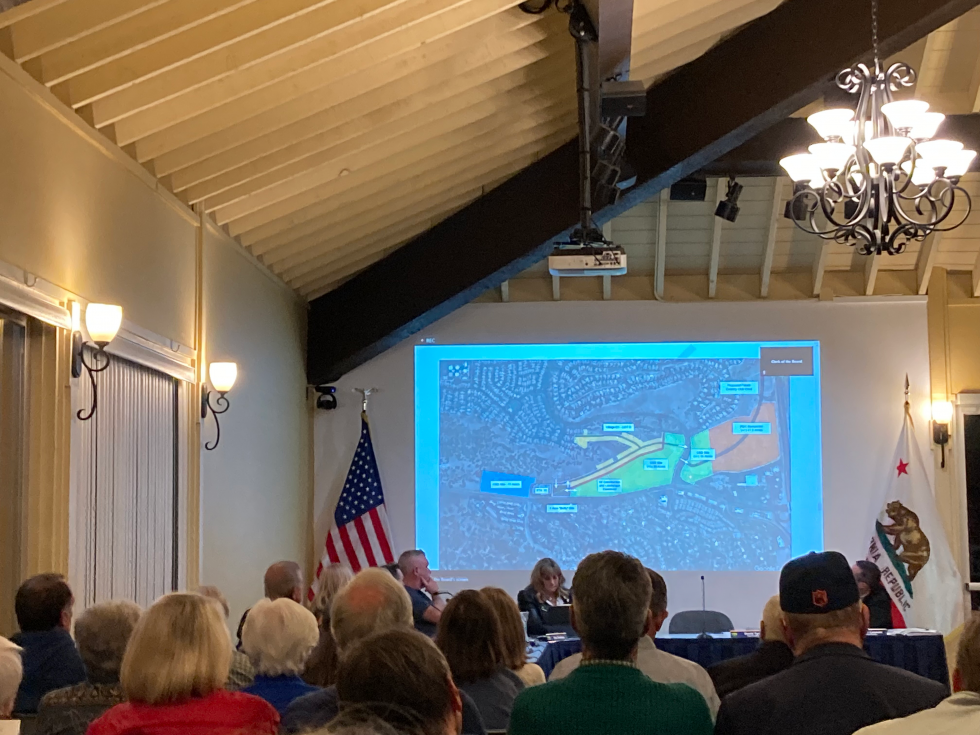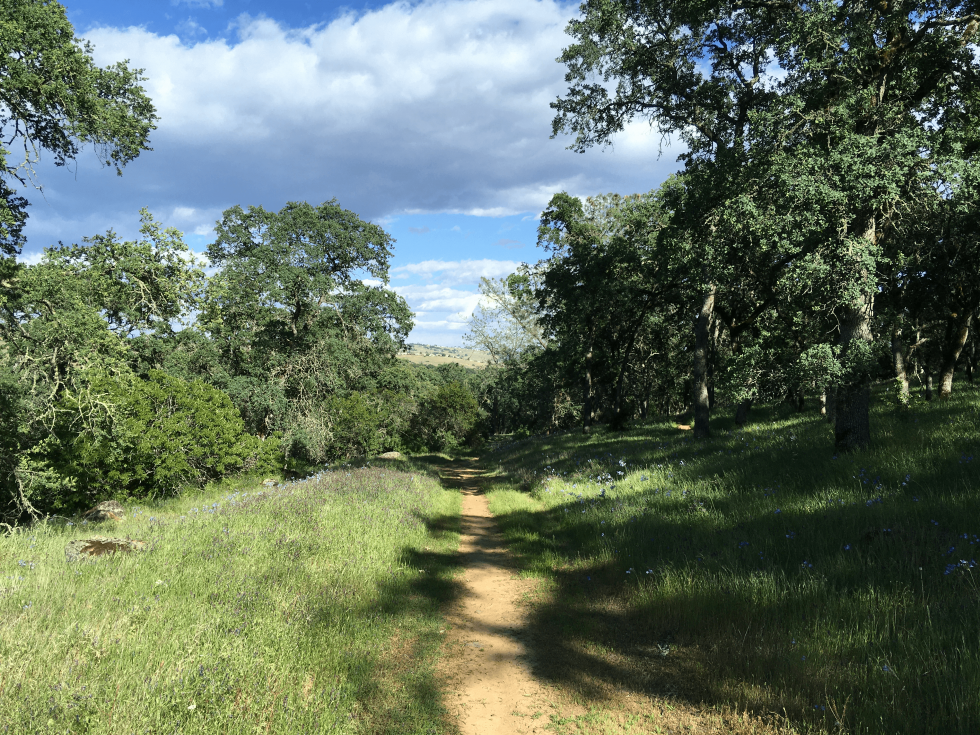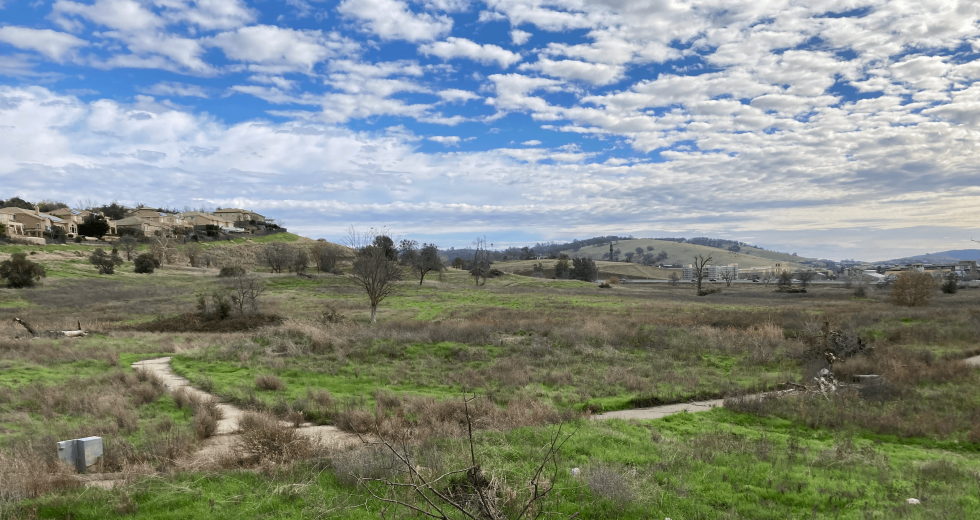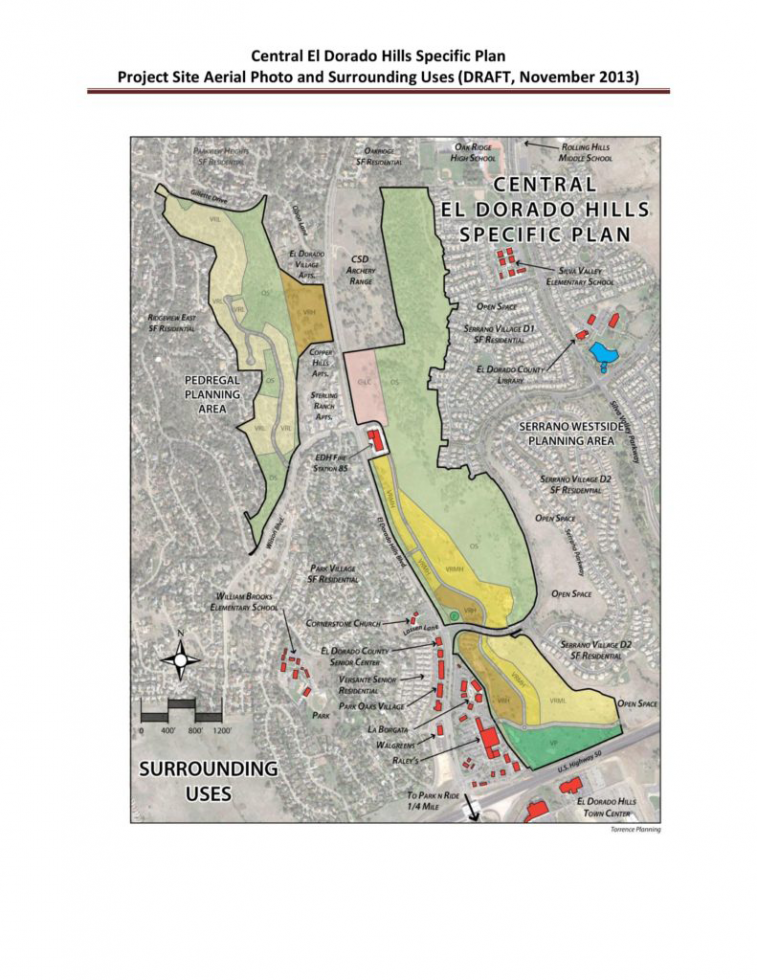For many people, the unincorporated community of El Dorado Hills drew them in because of its rolling hillsides and untouched panoramic views that resemble the French countryside. Yet a five-person board of supervisors has the power to determine the town’s fate — and people are biting their nails over whether the board opposes conversion of a greenbelt known as the “old golf course” and its environs into a housing development. Residents have proven that they are invested in keeping open space open; a 2015 Measure E vote resoundingly registered the fact that 91 percent of El Dorado Hills residents did not support a rezone of the golf course. That space is zoned open space recreation “into perpetuity,” yet residents are finding that perpetuity doesn’t last that long these days.
The roughly 100 acres in question are owned by Parker Development, which built the well-known Serrano development, and which has sought a rezone so it can build 1,000 residential units at the golf course as part of its Central El Dorado Hills Specific Plan. The Plan for 1,000 homes is termed Serrano Westside and would be gated. The Plan also includes a tranquil wooded area known as Gillette Woods, where Parker intends to build a subdivision called Pedregal.
Besides turning open space into gated neighborhoods that current residents will be locked out of, El Dorado Hills citizens struggle with other concerns. If Parker succeeds in rezoning, how will the already-strapped school district take in new students, how will local hospitals handle an influx of patients, and how will a strained electrical grid and water table support this many new homes? There are also concerns about wildlife habitats and even, at the Gillette Woods site, Native American artifacts. A community group called Parks Not Parker, later converted to Open Space El Dorado Hills, formed to inform residents of the issues.
At a meeting on Nov. 20, 2023, the El Dorado Hills Community Services District revealed to residents a suggestion that arose out of closed sessions: the purchase of 55 acres of the Parker land for $10 million to secure its preservation as open space recreation. Parker would donate an additional 11 acres. There remains 40-odd acres of option property the CSD could purchase for an additional $9.96 million that would be re-confirmed as open space recreation, again into perpetuity.
At the CSD meeting on Nov. 30, 2023, board members voted on
purchasing a portion of land from Parker Development.

The Gillette Woods parcel’s fate is unclear; that land is zoned residential, but Parker chose to bundle it with the golf course land in the Specific Plan. “The absence of Pedregal in the whole discussion is concerning,” says Mike West, an active member of Open Space El Dorado Hills.
Community members seemed unsettled at the $10 million price tag, but as local businessman and resident John Richard pointed out during the public speaking portion of the meeting, it provides a way to wrest control of the land out of the hands of Parker Development and the supervisors whom people worry could approve the rezone. “I don’t trust the board of supervisors,” he said, which drew applause. “It might just be the thing where you overpay and take your licks.”
In a later interview, Richard, who has been a Bay Area developer, said, “Parker was being encouraged to pursue this. I’ve never seen anything like this in the Bay Area, where a community is so opposed to a project and yet the governing bodies continue to encourage movement forward. This would have never gotten so far in the Bay Area.”
Those in favor of the rezone may point out that California is in a housing crisis and building more homes should be a priority. However, the board of supervisors passed a Housing Element Update in 2021 that covers the years 2021-2029 and will fulfill the state’s mandated requirement for additional housing units. That plan, created by the Sacramento Area Council of Governments, calls for approximately 5,000 housing units to be built in the county’s West Slope area and 400 in the East Slope-Tahoe Basin area (both also unincorporated like El Dorado Hills).
Another speaker during the public comment session was Sue Taylor, a building designer and member of the Save Our County-Joint Coalition. In a separate interview, she said that the General Plan for El Dorado Hills includes a dedicated commitment to retain 30 percent open space. All projects must adhere to that guideline. She also said there is a Road Capacity requirement; any residential development on or near the old golf course would impact El Dorado Hills Boulevard, which is already facing congestion. “If the county would follow the transportation element of the General Plan, Parker’s project could not have moved forward,” she says.
She sees the 2015 Measure E vote as a missed opportunity. “After the CSD board saw the result of that advisory vote, they should have put an initiative on the ballot to actively lock it down,” she says.
Gillette Woods seen in bloom in April 2021.

Mike West and Bonnie Bastian, another member of Open Space El Dorado Hills, point to District 1 Supervisor John Hidahl as part of the problem in fighting the rezone. As a deciding fifth voice on a split board, his vote is key. “He specifically ran on the premise that he would keep the golf course as open space. That’s why it’s so maddening to all of us that that’s not what happened,” says Bastian.
“We made a very poor choice in selection of county supervisor,” says West.
Supervisor Hidahl says, “My commitment was to maintain open space” and asserts he has worked behind the scenes to do that. “It’s not about stopping anything; it’s that we preserve some kind of recreational space we can use. Things change with time. This is a case in point.”
Regarding the $10 million price tag for only part of the land, Bastian says that Parker Development originally wanted $30 million for all 98 acres and has backed that down to around $20 million. “It’s difficult to determine if the price is fair. It seems high considering it’s still zoned as open space,” says Bastian. She and West say that the appraiser hired by Parker calculated the land cost based on the “highest and best use of the property;” in other words, as if it was zoned residential.
As for the executive golf course whose greens form a major chunk of the land at issue, Parker Development closed it down in 2007, saying that it had failed, although many contest the assertion that it wasn’t profitable and that there wasn’t demand for public golf, especially as the population has increased (a separate golf course at Parker’s Serrano development is private). “Have you ever heard the adage that there are ‘liars, damn liars and accountants?’” asks West. “If you own a business, it’s not difficult to cook the books.” West says his group has a recording of Tony Mansour, a former owner of the golf course, saying that it was operating at a profit. The 18-hole course first opened in 1964 to be played in “less than three hours,” according to a review on Foretee.com, to provide “a ‘get-a-little-golf-in’ timeframe for the busy executive.”
At the community meeting, several speakers spoke optimistically about reviving the course. One speaker said that a world class public golf facility could be a “huge opportunity” for El Dorado Hills and that new trends with shorter golf courses would be viable on this parcel size, along with a walking trail for non-golfers. Another commenter worried about the water-intensive nature of golf courses in a state that often experiences drought.
The CSD board voted unanimously that night to pay the $10 million to Parker, with president Noelle Mattock tearfully saying, “This is a watershed moment for this community” and recalling golfing with her parents at the course. The board has the $10 million on hand as part of a capital deficiency reserve but may instead turn to other options, such as encouraging major donors, floating a publicly financed bond or entering into a public-private partnership to build a proposed four-star hotel next to a nine-hole public course. The CSD is currently involved in three lawsuits, but they are not listed as a potential liability on the books.
But El Dorado Hills isn’t out of the woods yet. A planning department meeting has been set for Jan. 29 to brief the community on the rezoning issue and collect public input, says Hidahl. The supervisors would vote on the rezone at a second meeting roughly 30 days later. These meetings will still take place unless the CSD purchase has closed escrow; given that there is a Jan. 3 deadline for CSD to sign the purchase agreement, that’s tight timing. In other words, the supervisors could still approve the rezone if escrow lags. Kirk Bone, director of government relations for Parker Development, confirmed in an interview that, “it’s pending before the county right now to see if we can’t get rezoned.”
Sue Taylor urges residents to comment on the third partial recirculated draft Environmental Impact Report for the CEDHSP before its Jan. 26 deadline and to contact their supervisors to register their desires. When pressed to say how he would vote should the second meeting be held, Hidahl said, “I personally can’t advise how I’ll vote because I haven’t heard all the information.”
Some remain baffled that the supervisors even entertained the notion of a rezone. “Parker is not entitled to a rezone,” said Kelley Nalewaja, a District 1 representative of the El Dorado County GOP, at the Nov. 20 meeting. “He’s entitled to the land as it is.”
–
Stay up to date on business in the Capital Region: Subscribe to the Comstock’s newsletter today.
Recommended For You

‘Mystery City’ Unveiled
Proposed community envisions the good ol’ days; critics call it sprawl
Sramek, 36, is founder and CEO of California Forever, which seeks to build a large new community in Solano County. While cities or large unincorporated communities have been built from scratch before in California and elsewhere, what makes this potential metropolis unusual — and has stirred public controversy — are the people behind it and its backstory.

Book Review: ‘Outgrowing Capitalism’ in a New Economic Era
In “Outgrowing Capitalism: Rethinking Money to Reshape Society and Pursue Purpose,” economic thought leader and future-of-work expert Marco Dondi invites us to reimagine our global economic framework, challenging the very foundations of how money is created and allocated in society.

Dedication, Dance and Violence
Meet the Sacramento State student who moved from India to study mixed martial arts with Urijah Faber
At only 18 years old, Aranjot Kaur moved from her home in India to Sacramento to pursue her dream: becoming a professional mixed martial arts athlete in the Ultimate Fighting Championship, one of the world’s most influential MMA organizations.

Are Probiotics Safe for Infants?
UC Davis spinoff startup comes under fire after infant death linked to product
In recent months, Infinant Health has come under fire after the death of a preterm infant has been linked to its probiotic product. The FDA issued a warning in September to hospitals, advising them against administering Evivo with MCT Oil, the product which contains the live bacterium B. infantis.




